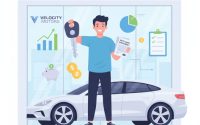Best Auto Loans of 2025: Find the Perfect Car Financing
Best Auto Loans of 2025: Find the Perfect Car Financing – Your Roadmap to 2026 Vehicle Affordability
Introduction: Driving Down the Cost of Ownership: 2025 & Planning for 2026
An auto loan represents one of the largest debts a US consumer undertakes, second only to a mortgage. Securing the Best Auto Loans of 2025 is critical. The interest rate, or Annual Percentage Rate (APR), determines the total cost of the vehicle. A difference of just two percentage points in the APR can save thousands of dollars over the life of the loan. Car financing should be treated as a separate, major financial negotiation. Borrowers must find the lowest rate available before stepping onto the dealership lot.
In 2025, the auto loan market requires buyers to be financially proactive. Lenders reward high FICO scores and substantial down payments with prime rates. The power lies in securing pre-approval from outside lenders. This comprehensive guide defines the top three lending sources. It examines the current interest rate environment. It details the essential steps for strategic negotiation. This resource provides a strategic blueprint for finding the perfect financing in 2025 and maximizing savings throughout 2026.
## Auto Loan Fundamentals: New vs. Used and Loan Types
The nature of the vehicle and the structure of the loan significantly affect the final APR.
1. New Car Loans (The Lower Risk)
New cars typically secure the lowest APRs. They depreciate less rapidly at the start. Lenders view them as lower risk.
- Rates: Prime rates are most accessible for new cars.
- Advantage: Eligibility for subsidized rates (e.g., 1.9% or 0% APR) offered by manufacturer captive finance companies (Ford Credit, Toyota Financial).
2. Used Car Loans (The Higher Risk)
Used cars pose a higher risk due to potential mechanical issues and immediate depreciation. Lenders compensate with higher APRs.
- Rates: Average APRs are consistently higher than new car rates for comparable credit scores.
- Warning: The loan term is often restricted (e.g., maximum 60 or 72 months).
3. Refinancing Loans (The Second Chance)
Refinancing replaces an existing, high-rate auto loan with a new, lower-rate loan.
- Goal: Use this tool when your credit score has improved significantly since the original purchase.
- Benefit: Can drastically lower monthly payments and reduce the total interest paid.
## 2025 Auto Loan Rates: What to Expect by Credit Tier
Your FICO Auto Score is the single most important factor determining your rate.
| Credit Tier (FICO Score) | New Car APR Range (Approx.) | Used Car APR Range (Approx.) |
| Super Prime (740+) | 4.5% – 7.0% | 5.5% – 8.0% |
| Prime (680 – 739) | 6.5% – 9.0% | 8.0% – 12.0% |
| Non-Prime (620 – 679) | 9.0% – 13.0% | 12.0% – 18.0% |
| Subprime (550 – 619) | 13.0%+ | 18.0% – 25.0%+ |
Actionable Insight: Improving your score from the Prime to the Super Prime tier ensures the lowest rates. Focus intensely on credit utilization before applying.
## The Three Best Sources for Auto Financing
Do not rely only on the dealership. Compare quotes from these three distinct lending sources.
1. Credit Unions (Often the Lowest APR)
Credit unions are non-profit and typically offer the most favorable auto loan rates. They reward membership.
- Strategy: Check the rates of at least two local credit unions and one national credit union. Their pre-approval is the strongest leverage.
2. National Banks and Online Lenders (Convenience and Speed)
Major financial institutions (like Chase, Capital One) and online lenders (like LightStream) offer highly competitive rates for high-credit borrowers. Their digital pre-approval process is quick and efficient.
- Advantage: Provides an excellent benchmark rate instantly. Use this rate as your negotiation starting point.
3. Dealership Financing (The Captive Offer)
Dealerships partner with manufacturer captive finance companies. They may offer subsidized, ultra-low promotional rates (0% to 3.9%).
- Warning: These rates are usually reserved for only the top credit tier (780+ FICO). Accepting the subsidized rate may mean forfeiting valuable cash rebates on the vehicle. Calculate which offer saves more overall money.
## The Strategic 5-Step Financing Process
Securing the best loan is a process that separates the financing from the price negotiation.
Step 1: Optimize Your Credit Score (Pre-Application)
Check your credit report (AnnualCreditReport.com). Pay down revolving credit card debt. Ensure utilization is below 10%. Your FICO score is your greatest asset.
Step 2: Secure Pre-Approval from Outside Lenders
Apply for pre-approval from at least three different sources (Credit Union, Bank, Online Lender). Group these applications within a two-week window. This minimizes the impact of multiple hard inquiries on your score.
Step 3: Negotiate the Car Price Separately
Enter the dealership with your outside pre-approval secured. Negotiate the vehicle’s final sale price first. Do not mention your financing until the price is finalized and agreed upon.
Step 4: Leverage Your Best Outside Rate
Once the price is set, present your best pre-approval rate (the “Plan A” financing). Give the dealer’s F&I (Finance and Insurance) manager the chance to beat it. Accept the lower of the two rates. This leverage maximizes savings.
Step 5: Scrutinize the Loan Document (APR vs. Interest Rate)
Ensure the loan document lists the rate you agreed to. Compare the Annual Percentage Rate (APR), not just the interest rate. The APR includes mandatory loan fees. The APR reflects the true cost of borrowing.
## Smart Loan Term and Down Payment Strategies
These two factors significantly impact long-term affordability and risk.
1. Avoid Extended Loan Terms (72+ Months)
Longer terms (72, 84, or even 96 months) lead to lower monthly payments. However, they result in paying substantially more interest. They also increase the risk of being “upside down” (owing more than the car is worth). Choose the shortest term you can comfortably afford (e.g., 48 or 60 months).
2. Make a Substantial Down Payment
An ideal down payment is 20% of the vehicle price. A large down payment immediately reduces the principal. It lowers the Loan-to-Value (LTV) ratio. It minimizes the risk of negative equity (upside down).
3. Beware of Negative Equity
If you are rolling negative equity (debt from a previous vehicle) into a new loan, seek alternatives. This practice dramatically increases the cost and risk of the new financing. Attempt to pay off the old negative balance first.
## Strategy for 2026: Maintaining Affordability and Wealth
A smart financing decision in 2025 ensures sustained financial stability in 2026.
1. Automate and Overpay the Principal
- 2025 Action: Set up automatic monthly payments. Pay a small amount extra (e.g., $50) and dedicate it strictly to principal reduction.
- 2026 Benefit: This accelerates the loan payoff. It drastically reduces the total interest paid over the life of the loan.
2. Monitor Refinance Opportunities
- 2025 Action: Check refinancing rates every 6 to 12 months.
- 2026 Benefit: If your FICO score increases significantly, or if general interest rates drop, refinance the loan in 2026. This can save hundreds or thousands of dollars on the remaining balance.
3. Build a Dedicated Repair Fund
- 2025 Action: Allocate any savings from securing a lower APR into a dedicated vehicle repair savings account.
- 2026 Benefit: This fund ensures you are prepared for unexpected maintenance. It prevents reliance on high-interest credit cards for repairs.
## Final Word: Knowledge is the Ultimate Negotiator
Securing the Best Auto Loans of 2025 is achieved through preparation and leverage. Therefore, the buyer must prioritize optimizing their credit score. They must secure pre-approval from at least three competing lenders. They must use that pre-approval to compel the dealership to offer a lower rate. By maintaining financial discipline throughout the process and choosing a sensible loan term, consumers minimize interest costs. This guarantees an affordable car and a stable financial position throughout 2026 and beyond.
Related Posts

